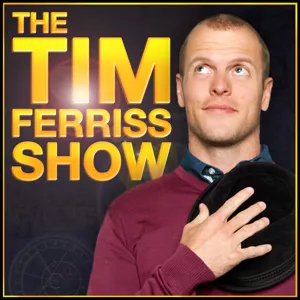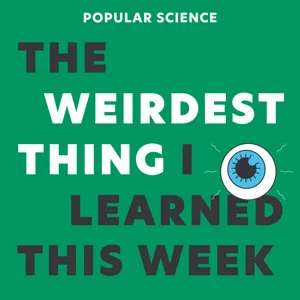Brought to you by AG1 all-in-one nutritional supplement, LMNT electrolyte supplement, and Eight Sleep’s Pod Cover sleeping solution for dynamic cooling and heating.
Resources from this episode: https://tim.blog/2023/08/04/dr-shirley-sahrmann/
Shirley A. Sahrmann, PT, PhD, is Professor Emerita of Physical Therapy at Washington University School of Medicine in St. Louis, Missouri. She received her bachelor’s degree in physical therapy and her masters and doctorate degrees in neurobiology from Washington University, where she joined the physical therapy faculty and became the first director of their PhD program in movement science.
Shirley became a Catherine Worthingham Fellow of the American Physical Therapy Association in 1986 and in 1998 was selected to receive the Mary McMillan Award, the Association’s highest honor. She is a recipient of the Association’s Marion Williams Research Award, the Lucy Blair Service Award, the Kendall Practice Award, and the Inaugural John H.P. Maley Lecturer Award.
She has also received Washington University's Distinguished Faculty Award, the Distinguished Alumni Award, the School of Medicine’s Inaugural Distinguished Clinician Award, and an honorary doctorate from the University of Indianapolis. She has also received the Bowling-Erhard Orthopedic Clinical Practice Award from the Orthopaedic Academy of the APTA. She has served on the APTA Board of Directors and as president of the Missouri Chapter.
Her first book, Diagnosis and Treatment of Movement Impairment Syndromes, has been translated into seven languages. Her second book, Movement System Impairment Syndromes of the Extremities, Cervical and Thoracic Spines, has been equally influential in promoting movement diagnoses.
Please enjoy!
*
This episode is brought to you by LMNT! What is LMNT? It’s a delicious, sugar-free electrolyte drink mix. I’ve stocked up on boxes and boxes of this and usually use it 1–2 times per day. LMNT is formulated to help anyone with their electrolyte needs and perfectly suited to folks following a keto, low-carb, or Paleo diet. If you are on a low-carb diet or fasting, electrolytes play a key role in relieving hunger, cramps, headaches, tiredness, and dizziness.
LMNT came up with a very special offer for you, my dear listeners. For a limited time, you can get a free LMNT Sample Pack with any purchase. This special offer is available here: DrinkLMNT.com/Tim.
*
This episode is also brought to you by AG1! I get asked all the time, “If you could use only one supplement, what would it be?” My answer is usually AG1, my all-in-one nutritional insurance. I recommended it in The 4-Hour Body in 2010 and did not get paid to do so. I do my best with nutrient-dense meals, of course, but AG1 further covers my bases with vitamins, minerals, and whole-food-sourced micronutrients that support gut health and the immune system.
Right now, you’ll get a 1-year supply of Vitamin D free with your first subscription purchase—a vital nutrient for a strong immune system and strong bones. Visit DrinkAG1.com/Tim to claim this special offer today and receive your 1-year supply of Vitamin D (and 5 free AG1 travel packs) with your first subscription purchase! That’s up to a one-year supply of Vitamin D as added value when you try their delicious and comprehensive daily, foundational nutrition supplement that supports whole-body health.
*
This episode is brought to you by Eight Sleep! Eight Sleep’s Pod Cover is the easiest and fastest way to sleep at the perfect temperature. It pairs dynamic cooling and heating with biometric tracking to offer the most advanced (and user-friendly) solution on the market. Simply add the Pod Cover to your current mattress and start sleeping as cool as 55°F or as hot as 110°F. It also splits your bed in half, so your partner can choose a totally different temperature.
Go to EightSleep.com/Tim and save $250 on the Eight Sleep Pod Cover. Eight Sleep currently ships within the USA, Canada, the UK, select countries in the EU, and Australia.
*
[07:12] A brief terminology primer.
[13:00] Why Shirley's first book is so influential among physical therapists.
[15:54] The correlation between lifestyle and health hasn't always been obvious.
[18:16] Low back pain: not a diagnosis, but a symptom.
[20:41] The trouble with overdeveloped abdominals.
[22:32] What's my problem?
[30:14] The Movement Systems Syndromes (MSS) approach.
[31:29] The wrong walk home.
[33:01] Correcting bad habits.
[35:00] Psoas it goes.
[37:03] Other commonly repeating culprits.
[40:36] Pump handle and bucket handle.
[43:41] The body follows the path of least resistance.
[48:00] Anterior superior iliac spine (ASIS)
[49:20] How Shirley examines a new patient.
[55:11] Assessing athletes vs. non-athletes.
[56:18] Dynamic neuromuscular stabilization (DNS)
[57:49] Collapso-smasho and squeezo-smasho.
[59:10] Correcting low shoulders.
[1:05:26] Stretching: yes or no?
[1:09:56] Addressing my abdominal stiffness.
[1:16:28] When the spine doesn't want to go along for the ride.
[1:18:38] How has Shirley made it to 86 with her physical and mental health intact?
[1:34:32] What men should know about femoral retroversion.
[1:38:44] If it walks like a duck...
[1:41:11] Managing symptoms of Scheuermann's disease.
[1:42:49] Parting thoughts.
*
For show notes and past guests on The Tim Ferriss Show, please visit tim.blog/podcast.
For deals from sponsors of The Tim Ferriss Show, please visit tim.blog/podcast-sponsors
Sign up for Tim’s email newsletter (5-Bullet Friday) at tim.blog/friday.
For transcripts of episodes, go to tim.blog/transcripts.
Discover Tim’s books: tim.blog/books.
Follow Tim:
Twitter: twitter.com/tferriss
Instagram: instagram.com/timferriss
YouTube: youtube.com/timferriss
Facebook: facebook.com/timferriss
LinkedIn: linkedin.com/in/timferriss
Past guests on The Tim Ferriss Show include Jerry Seinfeld, Hugh Jackman, Dr. Jane Goodall, LeBron James, Kevin Hart, Doris Kearns Goodwin, Jamie Foxx, Matthew McConaughey, Esther Perel, Elizabeth Gilbert, Terry Crews, Sia, Yuval Noah Harari, Malcolm Gladwell, Madeleine Albright, Cheryl Strayed, Jim Collins, Mary Karr, Maria Popova, Sam Harris, Michael Phelps, Bob Iger, Edward Norton, Arnold Schwarzenegger, Neil Strauss, Ken Burns, Maria Sharapova, Marc Andreessen, Neil Gaiman, Neil de Grasse Tyson, Jocko Willink, Daniel Ek, Kelly Slater, Dr. Peter Attia, Seth Godin, Howard Marks, Dr. Brené Brown, Eric Schmidt, Michael Lewis, Joe Gebbia, Michael Pollan, Dr. Jordan Peterson, Vince Vaughn, Brian Koppelman, Ramit Sethi, Dax Shepard, Tony Robbins, Jim Dethmer, Dan Harris, Ray Dalio, Naval Ravikant, Vitalik Buterin, Elizabeth Lesser, Amanda Palmer, Katie Haun, Sir Richard Branson, Chuck Palahniuk, Arianna Huffington, Reid Hoffman, Bill Burr, Whitney Cummings, Rick Rubin, Dr. Vivek Murthy, Darren Aronofsky, Margaret Atwood, Mark Zuckerberg, Peter Thiel, Dr. Gabor Maté, Anne Lamott, Sarah Silverman, Dr. Andrew Huberman, and many more.
See Privacy Policy at https://art19.com/privacy and California Privacy Notice at https://art19.com/privacy#do-not-sell-my-info.





